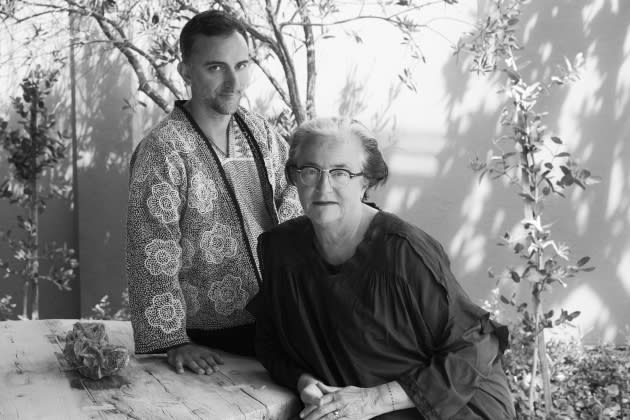Belgian Designers Play Up Textiles in New Exhibition
- Oops!Something went wrong.Please try again later.
- Oops!Something went wrong.Please try again later.

As part of the seventh annual New York Textile Month, Belgium Is Design is ready to launch an exhibition that plays up textiles, furniture and interiors titled, “The Gift to Be Simple.”
Curated by Lidewij Edelkoort and Philip Fimmano, the show, as its name suggests, magnifies simplicity as well as authenticity, and demonstrates how Belgian textile design is being reimagined. On view Sunday through Oct. 10 on Wooster Street in New York City’s SoHo neighborhood, the exhibition features the work of Natalia Brilli, Emma Cogné, Design for Resilience’s Vanessa Colignon, Laure Kasiers, Charlotte Lancelot, Geneviève Levivier, Pascale Risbourg, Alexia de Ville and Céline Vahsen.
More from WWD
This next generation of designers are keen to experiment through their material research and approaches. In Belgium, initiatives are underway at Centexbel, the Belgian textile research center, to explore the circular recycling of textiles on an industrial scale. And at Tex Lab Liège, the aim is to be a place of creation and emulation for textile designers and professionals, both for textile design and clothing. Belgium is also known for having leading fashion and textile departments at the university level. The widely known group of fashion designers, familiarly called the Antwerp Six (Walter Van Beirendonck, Ann Demeulemeester, Dries Van Noten, Dirk Van Saene, Dirk Bikkembergs and Marina Yee), are alumni of the Antwerp Royal Academy of Fine Arts.
“The strength of Belgian textiles comes from their education systems, which leads us to not only amazing fashion designers but also amazing textile designers. That extends to interiors. Everybody always asks me, ‘What is the definition of Belgian design and simplicity?’ It also comes from their openness and down-to-earthness, which the exhibit also embodies. It comes from their landscape, their industries, the mills, the linen fields — it’s all there in their history and DNA,” Fimmano said. “We’ve tried to illustrate there is much more to Belgian textiles than linen. There is also this creativity. We see it so easily in fashion. But I think a lot of people outside of Europe perhaps don’t know just how creative the rest of the design world is there.”
The pared-down aesthetic for the New York exhibition was “a very post-pandemic choice that was meant not to show anything too lavish or expensive,” Fimmano said. The Shaker song ‘Tis A Gift to Be Simple’ (also known as ‘Simple Gifts’) was a source of inspiration as the exhibition features rugs, bedding and linens that play up natural fibers — wool, linen, cotton and paper — and soothing colors, he said. “By accident, we wound up choosing nine women designers, which was a nice point. Maybe that indicates that for this idea of simplicity or connecting to time and authenticity, that the women designers of Belgium were more in touch with what we were looking for.”
Many of their creations have a calming effect, and despite being minimal in color they have stimulating effects texturally. One example is Cogné’s grass-like natural fiber rug that required a traditional braiding technique that a Portuguese craftswoman assisted with to weave a dense and solid weft.
As for why simplicity still resonates with people as the pandemic seems to subside, Fimmano said, “Even if we talk about fashion, there have been these two reactions both during and after the pandemic. One is the repression of consumption, not going out and not being able to connect with people, which led to all of these bright colors, the return of metallics, bling, all of the sequins and now the introduction of all the velevet. The other response was to slow down and not just live in pajamas and sweats, but really connect to organic materials and colors and a softer approach to fashion that includes soft tailoring, the return of knits and much more neutral colors. With interiors, it’s kind of similar where there are the pops of color that people want to introduce into their homes contrasted with major love of neutrals.”
The new exhibit falls into the second category of thinking about the home as a sacred space for family and to connect through food, he said, before adding that the exodus of many city dwellers and second home owners to the countryside has led to a renewed appreciation for rural aesthetics.
Best of WWD
